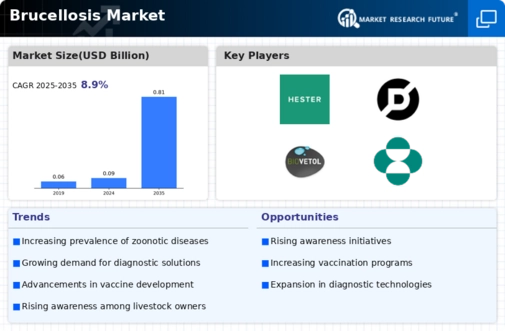Market Trends
Key Emerging Trends in the Brucellosis Market
Market trends are affected by Brucellosis, a bacterial disease that affects humans and animals, globally. Areas rich in cattle have significant market share. Asia, the Middle East, and Latin America are included. The industry is booming due to increased awareness and better diagnostics. Governments and healthcare organizations are educating the public and healthcare professionals about brucellosis to enhance early detection and treatment. This aims to educate the public about the condition. Increased research and development is another notable brucellosis market trend. Pharmaceutical companies and academic institutions are developing new drugs and vaccines to fight Brucellosis more effectively. This is done to meet demand for enhanced treatment options. Technological advances in diagnostic and treatment technologies are influencing industrial trends. Rapid, accurate diagnostic tests and innovative treatment methods are improving patient outcomes and growing the market. Government actions to regulate and prevent brucellosis are affecting market dynamics. Governments and pharmaceutical companies are creating a market-friendly climate via financial aid, regulatory frameworks, and collaboration. Veterinary healthcare is getting more attention since human and animal health are interdependent. Brucellosis is zoonotic, hence the market is adopting a combined veterinary and human healthcare strategy. The worldwide commerce in cattle and animal products spreads Brucellosis. In places where the illness is common and stakeholders are striving to restrict its transmission, international commerce rules and surveillance are influencing market patterns. This is particularly true in regulated areas. Pharmaceutical corporations, research institutes, and healthcare groups are forming synergistic alliances to conquer Brucellosis. These collaborations promote resource, information, and technology exchange, which helps create full solutions. Developing nations with high Brucellosis rates are becoming market growth priorities. Market growth in these areas is driven by increased access to medical services, better healthcare infrastructure, and healthcare awareness. Patient-centered techniques are becoming more essential in the Brucellosis sector. Personalized treatment regimens, patient education programs, and support networks are becoming more common to address Brucellosis' consequences on communities and individuals.







Leave a Comment